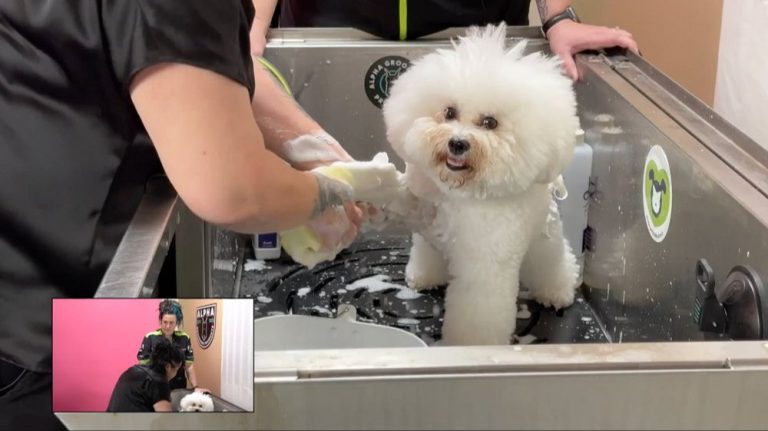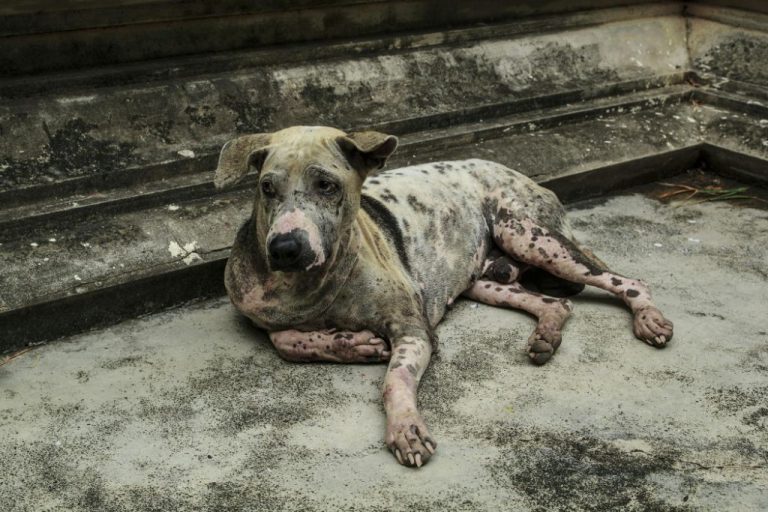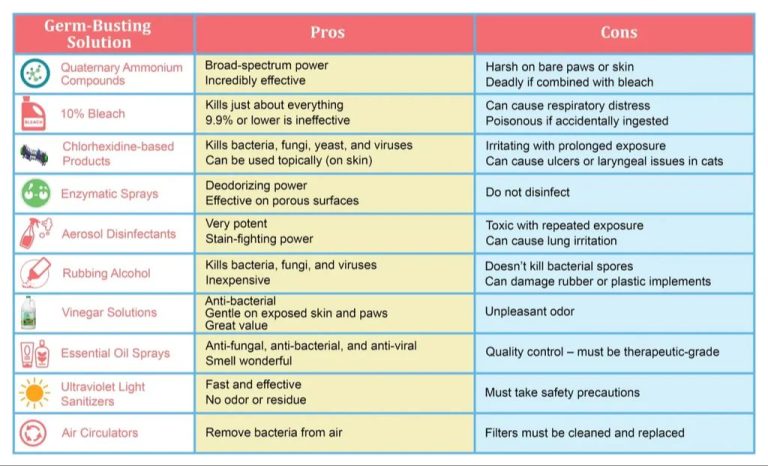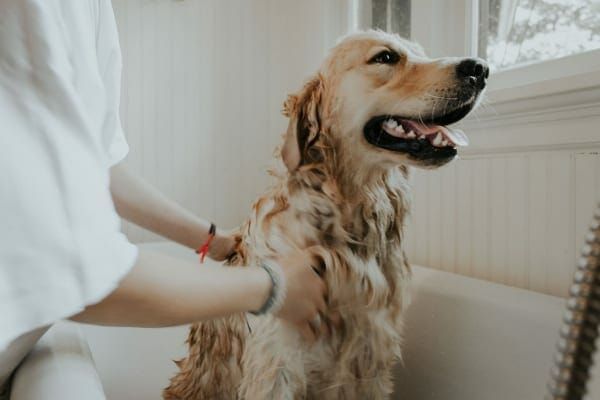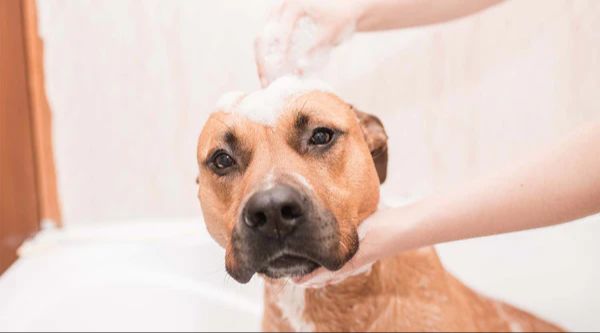Handling Dog Grooming Emergencies: What To Do In A Pinch
What Constitutes a Grooming Emergency
Grooming emergencies can arise unexpectedly during routine grooming appointments. According to research, the most common injuries that occur are cuts, lacerations, clipper burns, insect stings, seizures, overheating, frostbite, and choking (Ocular Injuries Related to Grooming Visits in Dogs). The tools groomers use, such as clippers and scissors, can cause injuries if proper care is not taken. Clipper burns in particular are a risk, as the blades can become hot with friction and burn a dog’s skin if held in one spot too long. Lacerations and cuts are also common when scissors or clippers slip.
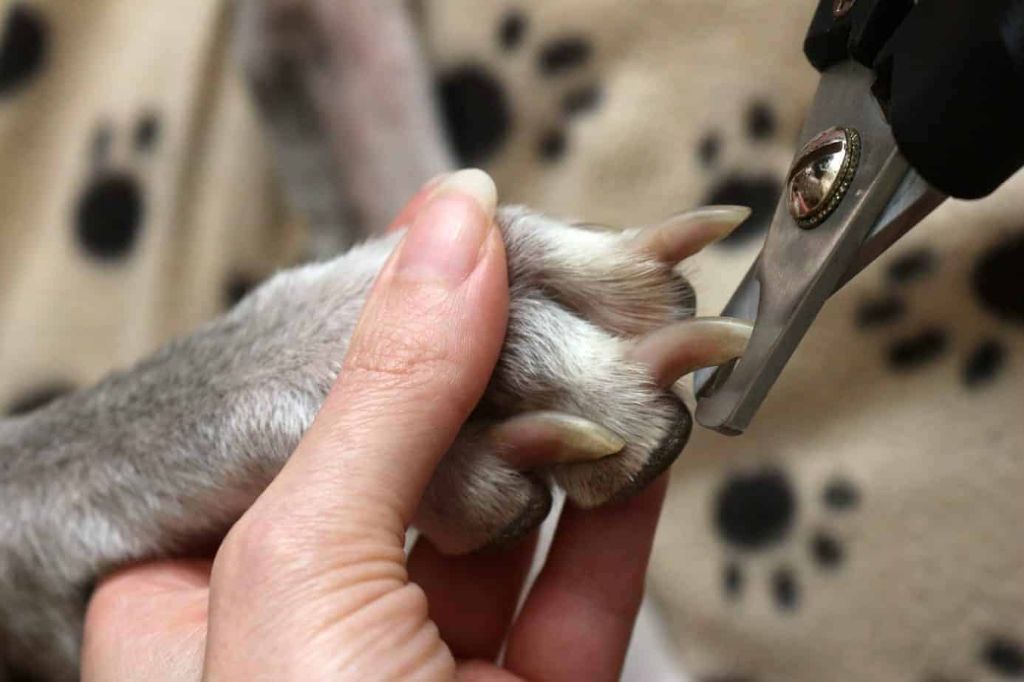
It’s important for groomers to remain alert and work carefully to avoid these injuries. Being properly trained on tool use and maintenance as well as learning safe handling techniques are important ways to prevent grooming accidents.
Cuts and Lacerations
Cuts and lacerations are some of the most common grooming injuries, as clipper blades and scissors can easily nick a dog’s skin if proper care isn’t taken. Signs that your dog has sustained a cut while grooming include:
- Visible wound with bleeding
- Excessive licking or biting at a specific area
- Whimpering or signs of discomfort when touched
- Limping or holding up a paw (for foot lacerations)
If you notice any of these signs, it’s important to act quickly to stop the bleeding. Apply constant, firm pressure to the wound with a clean towel or gauze for 5-10 minutes until bleeding slows [1]. For paw lacerations, wrap the paw in a bandage and apply pressure. Most minor grooming lacerations can be treated at home, but seek veterinary care if bleeding is excessive or doesn’t subside [2].
Clipper Burns
Clipper burns occur when clippers get too hot from improper use and make contact with a dog’s skin for too long, resulting in localized irritation, inflammation, and burns on the skin. According to Groomers Gallery, clipper burns often happen when groomers use dull blades, don’t properly lubricate/cool blades, or apply too much pressure. The skin becomes reddened and irritated, and in severe cases, blistering and broken skin can occur.
To prevent clipper burns, always make sure blades are sharp, properly oiled, and cool to the touch. Avoid applying excess pressure and routinely lift blades off the dog’s skin when grooming sensitive areas like arm pits, groin, and between toes. It’s also recommended to apply a skin soothing ointment after grooming as a protective barrier, as advised by Learn2GroomDogs. If a burn occurs, immediately stop grooming and apply a cold compress to soothe inflammation. Seek veterinary care for severe burns that blister or break the skin, as antibiotics or medications may be required.
Insect Stings
Insect stings are common grooming injuries. Bee, wasp, hornet, and ant stings can occur when grooming outdoors. Signs of a sting include sudden yelping or crying from the dog, swelling and hives at the sting site, and the stinger may still be visible.
Most stings cause minor reactions, like itching, hives, and swelling near the site. However, some dogs can have severe allergic reactions to insect venom. Anaphylactic shock is possible and can be fatal if not treated immediately. Signs of an allergic reaction include excessive swelling of the face/muzzle, pawing at the face, sudden vomiting or diarrhea, collapse, pale gums, seizure, and difficulty breathing.
According to the AKC, if your dog has signs of an allergic reaction to a bee sting, seek emergency veterinary care immediately (AKC). Antihistamines like Benadryl may help mild reactions, but anaphylaxis requires prompt veterinary treatment.
For mild swelling and pain at the sting site, the ASPCA recommends applying a cold compress and baking soda paste to help soothe the area (ASPCA).
Seizures
Seizures can occur in dogs for various reasons, including epilepsy, low blood sugar, organ failure, poisoning, and reactions to medications. However, one of the more common grooming-related causes is dryer seizures. These seizures happen when the high velocity dryer blows hot air into the dog’s ear canal, stimulating the vagus nerve and triggering a seizure response. Signs of a seizure include loss of consciousness, rigid muscles, paddling legs, chomping/chewing, salivation, and loss of bladder control.
If your dog experiences a seizure during grooming, it’s important to act quickly. First, turn off the dryer immediately to remove the stimulus. Carefully move the dog away from any dangerous objects or edges where they could fall and injure themselves. Do not put anything in their mouth or restrain them during the seizure. Simply let the seizure run its course. Contact the veterinarian for instructions once the seizure ends. Cool water and a fan can help stabilize the dog as well.
To help prevent dryer seizures, always introduce the dryer gradually at low speeds. Avoid sticking the dryer nozzle directly into the ears. Regular ear cleanings and medication can also reduce seizure triggers in susceptible dogs.
Overheating
Overheating or heat stroke is a dangerous condition that can occur when a dog’s body temperature rises above the normal range of 100-102.5 degrees Fahrenheit. Dogs are unable to cool themselves as efficiently as humans through sweating. According to the VCA Animal Hospitals, dogs suffering from heatstroke can have elevated breathing rates, dry or sticky gums, abnormal gum color, bruising in the gums, and may appear lethargic or uncoordinated.
To prevent overheating, it’s important to keep dogs cool on hot days. Do not leave dogs in vehicles, even with windows cracked, as temperatures can quickly rise to dangerous levels. Provide access to shady areas and fresh water at all times when outdoors. Limit exercise to early morning or evening when it’s cooler. Avoid strenuous exercise on extremely hot days. If you need to walk or play with your dog, opt for shorter sessions rather than one long outing.
According to the RSPCA, signs of overheating in dogs include heavy panting, excessive drooling, lethargy, collapse or uncoordinated movement. If you suspect heat stroke, move the dog to a cooler area and begin cooling efforts immediately. Place cool, wet towels over the body, especially the head, neck and chest. Use a fan to circulate air over the dog. Offer sips of cool water if the dog is alert. Seek emergency veterinary care as soon as possible.
Frostbite
Frostbite occurs when a dog’s skin and tissues freeze due to prolonged exposure to extremely cold temperatures. The most vulnerable areas are the paws, ears, tail, and nose. Frostbite causes skin discoloration and damaged blood vessels in the affected areas. Without prompt treatment, frostbite can lead to gangrene and require amputation of the damaged limbs or tissues.
Signs of frostbite include pale, grayish-blue skin, painful swelling, blisters, loss of feeling in the area, and hardened or stiff tissue. If you suspect your dog has frostbite, move them gently to a warm area and wrap the affected parts in blankets or towels. Avoid rubbing the frostbitten areas. Immediately contact your veterinarian, as severe or extensive frostbite requires rapid medical treatment.
To treat frostbite, the vet will slowly warm the tissues over several hours. Warm water compresses, heating pads, and warm IV fluids may be used. Antibiotics, pain medication, and other medication may also be prescribed. Surgery is sometimes necessary if the tissues die. With prompt care, many dogs recover fully. But watch closely for signs of recurrent frostbite once your dog is home.
To help prevent frostbite, limit your dog’s time outdoors in extreme cold. Provide booties, coats, and shelter. Check their paws, ears, and nose for coldness or numbness. Keep older, very young, small, and short-haired dogs inside as much as possible in harsh weather. And know the early signs of frostbite so you can get treatment fast.
With proper precautions and immediate veterinary care if frostbite occurs, you can help protect your dog from permanent damage due to freezing temperatures.
Choking
Choking occurs when an object becomes lodged in the throat or windpipe, blocking airflow. This is a life-threatening emergency for dogs that requires immediate first aid. Some common causes of choking in dogs include:
- Eating too fast and not properly chewing food
- Trying to swallow objects or toys
- Pulling on a leash or collar when excited
- Having swelling or obstruction in the throat
Signs that a dog is choking include exaggerated swallowing motions, pawing at the mouth, drooling, gurgling sounds, distress, panic, and loss of consciousness if blockage persists. According to https://firstaidforpets.net/choking-dog-help/, first aid steps for a choking dog are:
- Check if the dog can cough, breathe or make any noise. As long as some air is getting through, do not interfere.
- If the dog cannot breathe or make any noise, use back blows – strike the dog gently but firmly between the shoulder blades 5 times.
- Next, perform abdominal thrusts or “bear hugs” – stand behind the dog, make a fist, place it just behind the ribs and below the dog’s breastbone. Use your other hand to hold the fist in place, then pull abruptly inward and upward 3-5 times.
- Check the dog’s mouth and throat for any remaining obstructions.
- Once the object is dislodged, comfort the dog and monitor breathing. Seek emergency vet care, as choking can lead to secondary complications.
Staying calm, moving quickly, and following these first aid steps can help save a dog’s life during a choking emergency until veterinary care is available.
Emergency Contacts
Having the phone number and address for your regular vet as well as the nearest emergency vet clinic on hand can save precious time in the event of a grooming emergency. You’ll want to program both into your phone and keep their business cards in your grooming kit or post them on your fridge or bulletin board.
It’s also important to know if your regular vet has after-hours or on-call vets available. Many regular vets have arrangements with emergency clinics for after-hours care of their patients. Knowing what options are available through your regular vet can help guide where you take your dog in an emergency situation.
You’ll also want to have phone numbers available for poison control and your closest emergency room or urgent care facility. Though human medical facilities typically won’t treat pets, their staff can often provide guidance over the phone, especially for poisoning cases, while you’re in transit to a vet.
Having all these critical contacts organized ahead of time will save you stress and wasted time in the midst of a grooming crisis. Keep them together and easily accessible for any emergency situation.
Prevention Tips
There are several ways groomers can help prevent emergencies and injuries during the grooming process.
Always do a health and temperament check before beginning the groom. Look for signs of injury, skin conditions, or aggression that could lead to an emergency situation (PetMD).
Use proper restraint techniques and never leave a dog unattended on a grooming table. Dogs can injure themselves if they jump or fall off the table (PetMD).
Invest in high quality, well-maintained grooming tools and equipment. Dull blades or faulty machinery can cause cuts, burns, and other wounds (PetMD).
Keep a fully stocked first aid kit on hand and know basic first aid for dogs. Having supplies ready allows you to treat minor injuries immediately (CrossAgency).
Follow proper sanitation protocols and safely store chemicals. Prevent infectious diseases and chemical burns by keeping your workspace clean and organized.
Take breaks as needed and avoid rushing through grooms. Fatigue and haste often lead to accidents and mistakes.

